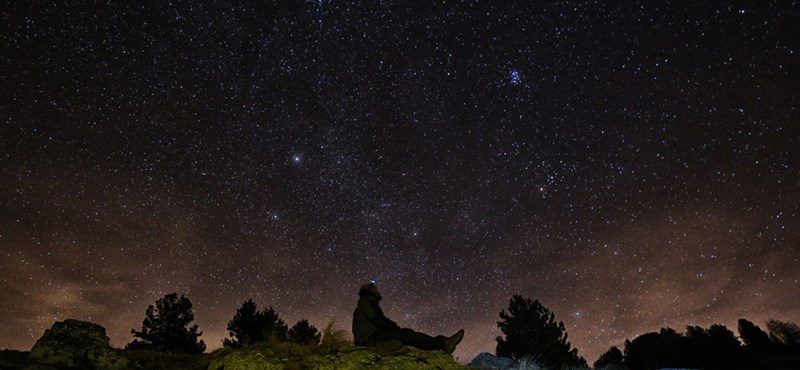[{“available”:true,”c_guid”:”d1c8782e-acbc-4e0d-af0e-99c667f73fc1″,”c_author”:”MTI”,”category”:”tudomany”,”description”:”Szerdáról csütörtökre virradó éjjel látványos csillaghullás figyelhető meg az égen, amikor megérkezik a Geminidák meteorraj. Kedvező időjárás esetén óránként akár százötven hullócsillagot is megszámlálhatunk.”,”shortLead”:”Szerdáról csütörtökre virradó éjjel látványos csillaghullás figyelhető meg az égen, amikor megérkezik a Geminidák…”,”id”:”20221212_erkezik_a_geminidak_meteorraj_mikor_december”,”image”:”https://api.hvg.hu/Img/ffdb5e3a-e632-4abc-b367-3d9b3bb5573b/d1c8782e-acbc-4e0d-af0e-99c667f73fc1.jpg”,”index”:0,”item”:”561151c5-26d2-4fe3-a000-d5f0a4b8d02d”,”keywords”:null,”link”:”/tudomany/20221212_erkezik_a_geminidak_meteorraj_mikor_december”,”timestamp”:”2022. december. 12. 00:03″,”title”:”Nézzen fel az égre a héten, megéri: hullócsillagok látványos show-ját hozza a Geminidák meteorraj”,”trackingCode”:”RELATED”,”c_isbrandchannel”:false,”c_isbrandcontent”:false,”c_isbrandstory”:false,”c_isbrandcontentorbrandstory”:false,”c_isbranded”:false,”c_ishvg360article”:false,”c_partnername”:null,”c_partnerlogo”:”00000000-0000-0000-0000-000000000000″,”c_partnertag”:null},{“available”:true,”c_guid”:”ae69ac14-51a8-4578-ac32-1d714e411ba4″,”c_author”:””,”category”:”itthon”,”description”:”A kabinet azzal, hogy aláássa az MNB monetáris politikáját, egy elhúzódó inflációs-gazdasági válságba löki az országot – mondta Simor András közgazdász.”,”shortLead”:”A kabinet azzal, hogy aláássa az MNB monetáris politikáját, egy elhúzódó inflációs-gazdasági válságba löki az országot…”,”id”:”20221210_Simor_Andras_szerint_sodrodunk_a_Huxit_fele”,”image”:”https://api.hvg.hu/Img/ffdb5e3a-e632-4abc-b367-3d9b3bb5573b/ae69ac14-51a8-4578-ac32-1d714e411ba4.jpg”,”index”:0,”item”:”6ef3dfae-138d-4116-8259-33d7446e3ce1″,”keywords”:null,”link”:”/itthon/20221210_Simor_Andras_szerint_sodrodunk_a_Huxit_fele”,”timestamp”:”2022. december. 10. 19:54″,”title”:”Simor András szerint sodródunk a Huxit felé”,”trackingCode”:”RELATED”,”c_isbrandchannel”:false,”c_isbrandcontent”:false,”c_isbrandstory”:false,”c_isbrandcontentorbrandstory”:false,”c_isbranded”:false,”c_ishvg360article”:false,”c_partnername”:null,”c_partnerlogo”:”00000000-0000-0000-0000-000000000000″,”c_partnertag”:null},{“available”:true,”c_guid”:”1fcda308-8cff-4931-bff1-25b0a1768b3d”,”c_author”:”MTI”,”category”:”vilag”,”description”:”Többen eltűntek, egyes hírek szerint egy ember meghalt.”,”shortLead”:”Többen eltűntek, egyes hírek szerint egy ember meghalt.”,”id”:”20221210_Jersey_sziget_La_Manche_csatorna_robbanas”,”image”:”https://api.hvg.hu/Img/ffdb5e3a-e632-4abc-b367-3d9b3bb5573b/1fcda308-8cff-4931-bff1-25b0a1768b3d.jpg”,”index”:0,”item”:”9150d840-0217-4b51-8eb9-aa900dc1cf7d”,”keywords”:null,”link”:”/vilag/20221210_Jersey_sziget_La_Manche_csatorna_robbanas”,”timestamp”:”2022. december. 10. 12:14″,”title”:”Robbanás volt a La Manche csatorna egyik szigetén”,”trackingCode”:”RELATED”,”c_isbrandchannel”:false,”c_isbrandcontent”:false,”c_isbrandstory”:false,”c_isbrandcontentorbrandstory”:false,”c_isbranded”:false,”c_ishvg360article”:false,”c_partnername”:null,”c_partnerlogo”:”00000000-0000-0000-0000-000000000000″,”c_partnertag”:null},{“available”:true,”c_guid”:”0f9c5484-a95b-4c06-ad1c-9b8026bbc16e”,”c_author”:”MTI”,”category”:”tudomany”,”description”:”A Pfizer és a BioNTech közös kutatásának eredményeként fejlesztették ki.”,”shortLead”:”A Pfizer és a BioNTech közös kutatásának eredményeként fejlesztették ki.”,”id”:”20221210_influenza_koronavirus_kombinalt_vedooltas_engedelyeztetes”,”image”:”https://api.hvg.hu/Img/ffdb5e3a-e632-4abc-b367-3d9b3bb5573b/0f9c5484-a95b-4c06-ad1c-9b8026bbc16e.jpg”,”index”:0,”item”:”065c310c-2ec2-4249-bcfe-7c075c1afe97″,”keywords”:null,”link”:”/tudomany/20221210_influenza_koronavirus_kombinalt_vedooltas_engedelyeztetes”,”timestamp”:”2022. december. 10. 12:04″,”title”:”Engedélyeztetés alatt van az influenza és a koronavírus elleni kombinált védőoltás Amerikában”,”trackingCode”:”RELATED”,”c_isbrandchannel”:false,”c_isbrandcontent”:false,”c_isbrandstory”:false,”c_isbrandcontentorbrandstory”:false,”c_isbranded”:false,”c_ishvg360article”:false,”c_partnername”:null,”c_partnerlogo”:”00000000-0000-0000-0000-000000000000″,”c_partnertag”:null},{“available”:true,”c_guid”:”761e58a4-c93d-4c3d-b1d5-e067a952fb22″,”c_author”:”hvg.hu”,”category”:”vilag”,”description”:”A túszejtőt elfogták, a túszok közül senki nem sérült meg. Német sajtóértesülések szerint a 40 éves túszejtő az ámokfutás előtt megölte a 70 éves anyját. “,”shortLead”:”A túszejtőt elfogták, a túszok közül senki nem sérült meg. Német sajtóértesülések szerint a 40 éves túszejtő…”,”id”:”20221210_Drezda_bevasarlokozpont_tuszejtes”,”image”:”https://api.hvg.hu/Img/ffdb5e3a-e632-4abc-b367-3d9b3bb5573b/761e58a4-c93d-4c3d-b1d5-e067a952fb22.jpg”,”index”:0,”item”:”7b53296d-3f11-4733-a80f-fe100e7b4617″,”keywords”:null,”link”:”/vilag/20221210_Drezda_bevasarlokozpont_tuszejtes”,”timestamp”:”2022. december. 10. 12:29″,”title”:”Túszokat ejtettek egy drezdai bevásárlóközpontban”,”trackingCode”:”RELATED”,”c_isbrandchannel”:false,”c_isbrandcontent”:false,”c_isbrandstory”:false,”c_isbrandcontentorbrandstory”:false,”c_isbranded”:false,”c_ishvg360article”:false,”c_partnername”:null,”c_partnerlogo”:”00000000-0000-0000-0000-000000000000″,”c_partnertag”:null},{“available”:true,”c_guid”:”36c7a700-c57f-4892-856a-28b097b1f01b”,”c_author”:”hvg.hu”,”category”:”kkv”,”description”:”Az üzletember vagyona 70 milliárd dollárral csökkent, miután a Twitter felvásárlása óta a Tesla-részvények ára a felére esett.\r\n\r\n “,”shortLead”:”Az üzletember vagyona 70 milliárd dollárral csökkent, miután a Twitter felvásárlása óta a Tesla-részvények ára a felére…”,”id”:”20221210_Elon_Musk_vilag_leggazdagabb_embere”,”image”:”https://api.hvg.hu/Img/ffdb5e3a-e632-4abc-b367-3d9b3bb5573b/36c7a700-c57f-4892-856a-28b097b1f01b.jpg”,”index”:0,”item”:”a2c7491c-7cb4-4767-93ec-a13fa3222be7″,”keywords”:null,”link”:”/kkv/20221210_Elon_Musk_vilag_leggazdagabb_embere”,”timestamp”:”2022. december. 10. 11:08″,”title”:”Sanszos, hogy Elon Musk már nem sokáig lesz a világ leggazdagabb embere”,”trackingCode”:”RELATED”,”c_isbrandchannel”:false,”c_isbrandcontent”:false,”c_isbrandstory”:false,”c_isbrandcontentorbrandstory”:false,”c_isbranded”:false,”c_ishvg360article”:false,”c_partnername”:null,”c_partnerlogo”:”00000000-0000-0000-0000-000000000000″,”c_partnertag”:null},{“available”:true,”c_guid”:”4465ed33-e095-4374-ad66-f82a4b820e5b”,”c_author”:”hvg.hu”,”category”:”gazdasag”,”description”:”Ennek ellenére nem csökkent a vásárolt energia mennyisége.”,”shortLead”:”Ennek ellenére nem csökkent a vásárolt energia mennyisége.”,”id”:”20221212_villamos_energia_gki”,”image”:”https://api.hvg.hu/Img/ffdb5e3a-e632-4abc-b367-3d9b3bb5573b/4465ed33-e095-4374-ad66-f82a4b820e5b.jpg”,”index”:0,”item”:”cf33c8af-9d56-405f-8ce5-7459e18c6e71″,”keywords”:null,”link”:”/gazdasag/20221212_villamos_energia_gki”,”timestamp”:”2022. december. 12. 04:17″,”title”:”Három és félszer annyit fizetnek az áramért a cégek, mint egy évvel ezelőtt”,”trackingCode”:”RELATED”,”c_isbrandchannel”:false,”c_isbrandcontent”:false,”c_isbrandstory”:false,”c_isbrandcontentorbrandstory”:false,”c_isbranded”:false,”c_ishvg360article”:false,”c_partnername”:null,”c_partnerlogo”:”00000000-0000-0000-0000-000000000000″,”c_partnertag”:null},{“available”:true,”c_guid”:”691c0f39-9eb1-4b30-a791-84841d75be65″,”c_author”:”hvg.hu”,”category”:”itthon”,”description”:”A politikus a Helyreállítási Tervben vette észre, hogy Magyarországon annyiért újítanának fel egy alföldi vasútszakaszt, amennyiből máshol új, hegyes-völgyes vidéket átszelő szuperexpressz vonalat építenek.”,”shortLead”:”A politikus a Helyreállítási Tervben vette észre, hogy Magyarországon annyiért újítanának fel egy alföldi…”,”id”:”20221211_Mar_el_is_loptak_azt_az_unios_penzt_amit_meg_meg_se_kapott_Magyarorszag__irja_Javor_Benedek”,”image”:”https://api.hvg.hu/Img/ffdb5e3a-e632-4abc-b367-3d9b3bb5573b/691c0f39-9eb1-4b30-a791-84841d75be65.jpg”,”index”:0,”item”:”1c6057d0-cc08-4c6d-bf16-94ac22857327″,”keywords”:null,”link”:”/itthon/20221211_Mar_el_is_loptak_azt_az_unios_penzt_amit_meg_meg_se_kapott_Magyarorszag__irja_Javor_Benedek”,”timestamp”:”2022. december. 11. 17:39″,”title”:”Jávor Benedek: Már el is lopnák azt az uniós pénzt, amit még meg se kapott Magyarország”,”trackingCode”:”RELATED”,”c_isbrandchannel”:false,”c_isbrandcontent”:false,”c_isbrandstory”:false,”c_isbrandcontentorbrandstory”:false,”c_isbranded”:false,”c_ishvg360article”:false,”c_partnername”:null,”c_partnerlogo”:”00000000-0000-0000-0000-000000000000″,”c_partnertag”:null}]


Order the weekly HVG newspaper or digitally and read us anywhere, anytime!
That’s why we ask you, our readers, to support us! We promise to keep doing the best we can!
We recommend it from the first page


Perhaps the most famous Christmas pop song in the world is 1994’s “All I Want for Christmas Is You”. But Hungarians could actually hear that wish in 1970.

The Mikulástroli Museum in Budapest is also collecting gifts this year.























![Does the Nintendo Switch 2 not even reach Steam Deck's performance? [VIDEO]](https://thegeek.hu/wp-content/uploads/sites/2/2023/06/thegeek-nintendo-switch-2-unofficial.jpg)






















